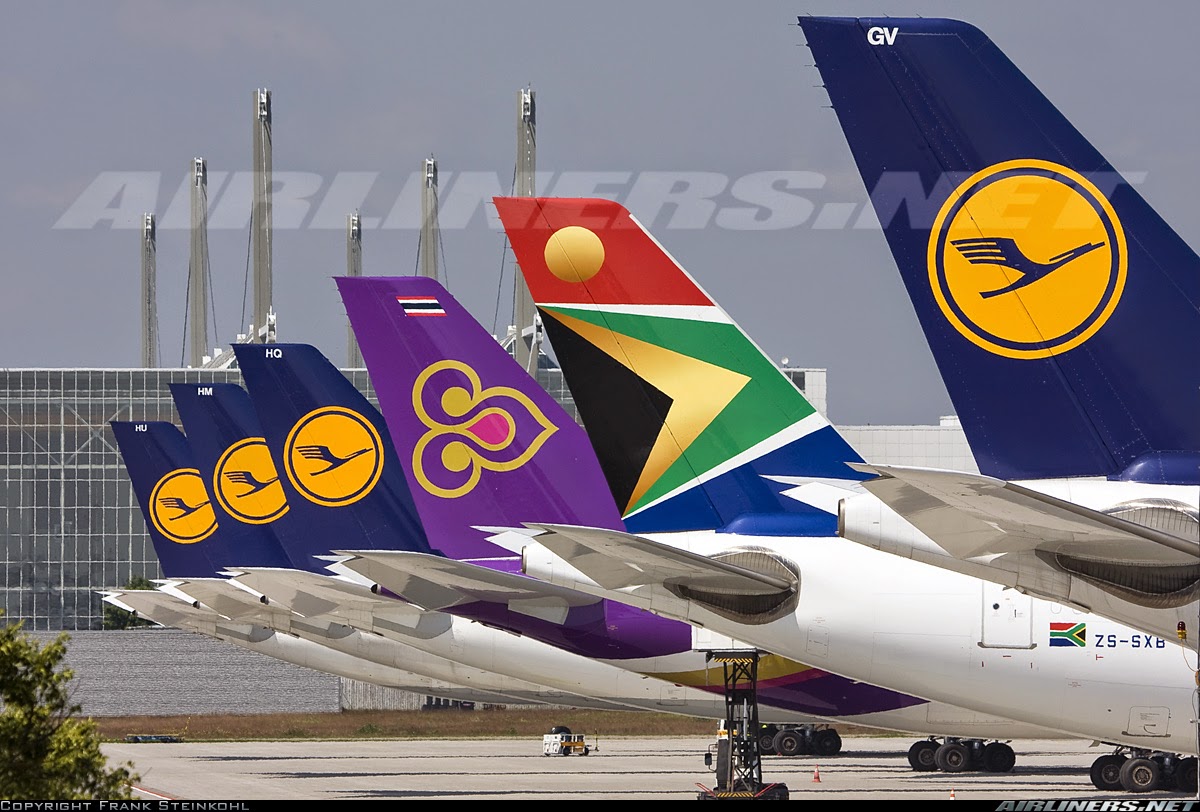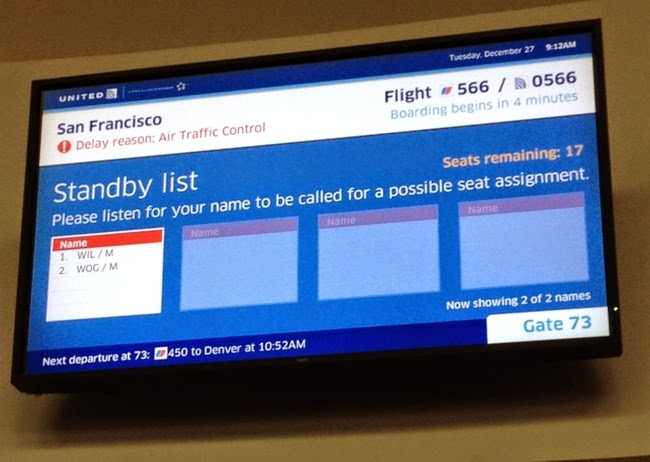Flight #88 - United Airlines 91
Tel Aviv (TLV) – Newark (EWR)
Monday, June 23, 2014
Depart: 11:10PM / Arrive: 4:20AM (+1 day)
Duration: 12hr 10min
Aircraft: Boeing 777
Seat: 17J, 17K and 17L (Economy)
Earned: 5,692 miles
Lifetime Miles: 175,328 miles
[UPDATE (September 23, 2014): Aegean announced they are changing their Miles & Bonus frequent flyer program so that you need to re-qualify each year. Therefore, it makes less sense to go for Aegean Gold Status.]
By the time everyone reads this post, I'll likely be in transit coming back to New York. It's definitely not an easy commute. From my grandparents' house in Haifa, we drive about 2 hours south to Ben Gurion Airport outside Tel Aviv. Since this is Israel, we are advised to arrive a full 3 hours before our flight departure time due to the extra security check points. And unless we're flying in business/first class, my father's United elite status doesn't get him much preferential treatment at TLV.
Then it's another 12 hours on board the plane til we land at 4:20AM. By the time we get through Customs (thank you, Global Entry!), collect our bags and get a car to take us to Manhattan, we're looking at 6AM. That's about 19 hours of transit door-to-door!
But on the positive side of things, upon completion of this flight, I will earn my very own
Aegean Airlines Gold Status membership, clearing 20,000 Aegean miles in their Miles & Bonus frequent flyer program. I'm sure you may have heard me mention this in other posts, but I figured I'd take time now to answer the series of questions you may have.
1. But aren't you flying United?
Yes, this flight is operated by United. And our home airport is Newark where United Airlines has a hub with dozens of non-stop domestic and international flights to just about anywhere we'd want to fly. So most of our flights are operated by United. But...United is a key member of the Star Alliance that partners up 26 international airlines.
2. What's Aegean have to do with that flight?
Through the Star Alliance arrangement, I can fly just about any airline in the alliance and credit the mileage to any other airline's frequent flyer program. One of the Star Alliance members is Aegean Airlines based in Greece. So I will fly United on this trip and credit the mileage to their Star Alliance partner, Aegean. My Aegean frequent flyer # will be on the boarding pass and as far as they know, I'm just another loyal Aegean customer.
3. Why Aegean?
The Aegean Airlines frequent flyer program is called Miles & Bonuses. Since Aegean is a Greek airline primarily serving a domestic market, they don't fly that many long haul routes compared to United or Lufthansa.
Therefore, M&B has one of the lowest mileage thresholds for earning elite status in the industry. In a single rolling 12 month period, only 4,000 miles are required for Aegean Blue (comparable to United Silver which requires 25,000 United mile per calendar year) and 20,000 miles for Aegean Gold (comparable to United Gold and it's 50,000 mile in a calendar year requirement). Plus, just for signing up with M&B, you get a free 1,000 mile head start, so it's really only 3,000 miles for Blue and 19,000 miles for Gold.

Additionally, while most frequent flyer programs have elite status that ends every year, Aegean's lasts indefinitely. After you have earned Blue or Gold status once with Aegean, you keep it as long as as your M&B account is active, which means having at least 1 flight credited to Aegean every 3 years. For United (and most other airlines), you'd have to fly another 50,000 miles
each calendar year to retain Gold status for the next year. It's just a crazy hamster wheel.
4. 20,000 miles seems to be 3-4 month's worth of travel for you. Why did it take so long?
Good question. Not every flight earns the same % of miles in each program. It's based on a few things: (a) what airline I'm actually flying and (b) what the fare class was on my ticket.

Each operating airline (the one actually labeled on the plane you're flying) has a different agreement with each of the other Star Alliance members in terms of crediting mileage.
Aegean has a website with each of their partner airlines to show you what you'd earn on each of the 25+ other partners.
Separately, the mileage credit depends on the fare class of your ticket. I'm not talking just the cabin classes of first, business or coach. There's literally a dozen fare classes within each cabin class (F, A, J, C, D, Z, Y, etc), so you can earn anywhere from 0%-300% of the mileage depending the airline program you want to credit the miles to.
Most leisure travelers who book weeks in advance have oftentimes purchased discounted economy tickets (W, S, T, L, K, or G). These discounted economy fare classes on United "metal" only earn 50% mileage credit with Aegean. In fact, even some discounted business class fares (P) earn nothing in Aegean's program.
5. So then you really flew 40,000 miles to get Aegean Gold?
Not really 40,000 miles, but yes, definitely more than 20,000. First, as I mentioned earlier, you receive 1,000 Tier miles just for signing up.
Second,
some of my flights were actually on US Airways (when they were still part of the Star Alliance). The agreement between Aegean and US Airways was to give 100% credit on all economy fare classes.
Additionally, there is also a 500 mile minimum you will earn on all flights, regardless of fare class. So for United flights under 1,000 miles (like
New York-Chicago), I'd still earn 500 miles on Aegean and not 357 (50% of the actual 714 miles flown).
6. But then still...Why Aegean instead of just crediting to United?
Another multi-part answer. First, starting in 2014, United implemented a dollar spend requirement to earn status with their MileagePlus program. The way my family chooses to fly - long distances on cheap fares - we were not going to meet the $5,000 Premier Qualifying Dollar requirement for United Gold (or even $2,500 United Silver) even if we were able to hit the mileage targets.
To give you an example, my father has flown 36,928 miles credited to United already this year before including our ZRH-TLV (1,747 miles) and TLV-EWR (5,692 miles) flights. So he's well on his way towards United Gold's 50,000 threshold by December 31.
However, in terms of PQD, he has only spent $2,096 and will likely not get to $5,000 absent some really bad situation where he needs to buy an expensive last minute ticket. Fortunately, he can waive this PQD requirement by spending $25,000 on his United co-branded credit card in 2014. Through
his manufactured spending tricks, he's already been able to do just that.
Fun fact, though - 2.5 year old toddlers can't get credit cards, so I'm SOL.
Second reason. If I earn Aegean Gold status now, I'll potentially have it for the rest of my life (as long as the M&B program rules don't change). I can always earn United Gold status later on and get on that hamster wheel later.
And the most important reason, when you have Gold status with a foreign Star Alliance airline, you get complimentary access to United's domestic airport lounges. Oddly enough, even having United Gold won't get you United lounge access within the US unless your itinerary includes an international segment overseas.
So if I'm flying United BusinessFirst class from New York-Honolulu and have United Gold status, no lounge access for me.

But if I were flying New York-Boston and flashed my Aegean M&B Gold card, then I'm relaxing in leather seats enjoying Youtube using the free lounge wifi while my dad is drinking free cheap beer and mother is
stealing packing up the complimentary crackers and carrot sticks.
[UPDATE (September 23, 2014): Aegean announced they are changing their Miles & Bonus frequent flyer program so that you need to re-qualify each year. Therefore, it makes less sense to go for Aegean Gold Status.]







.gif)


















